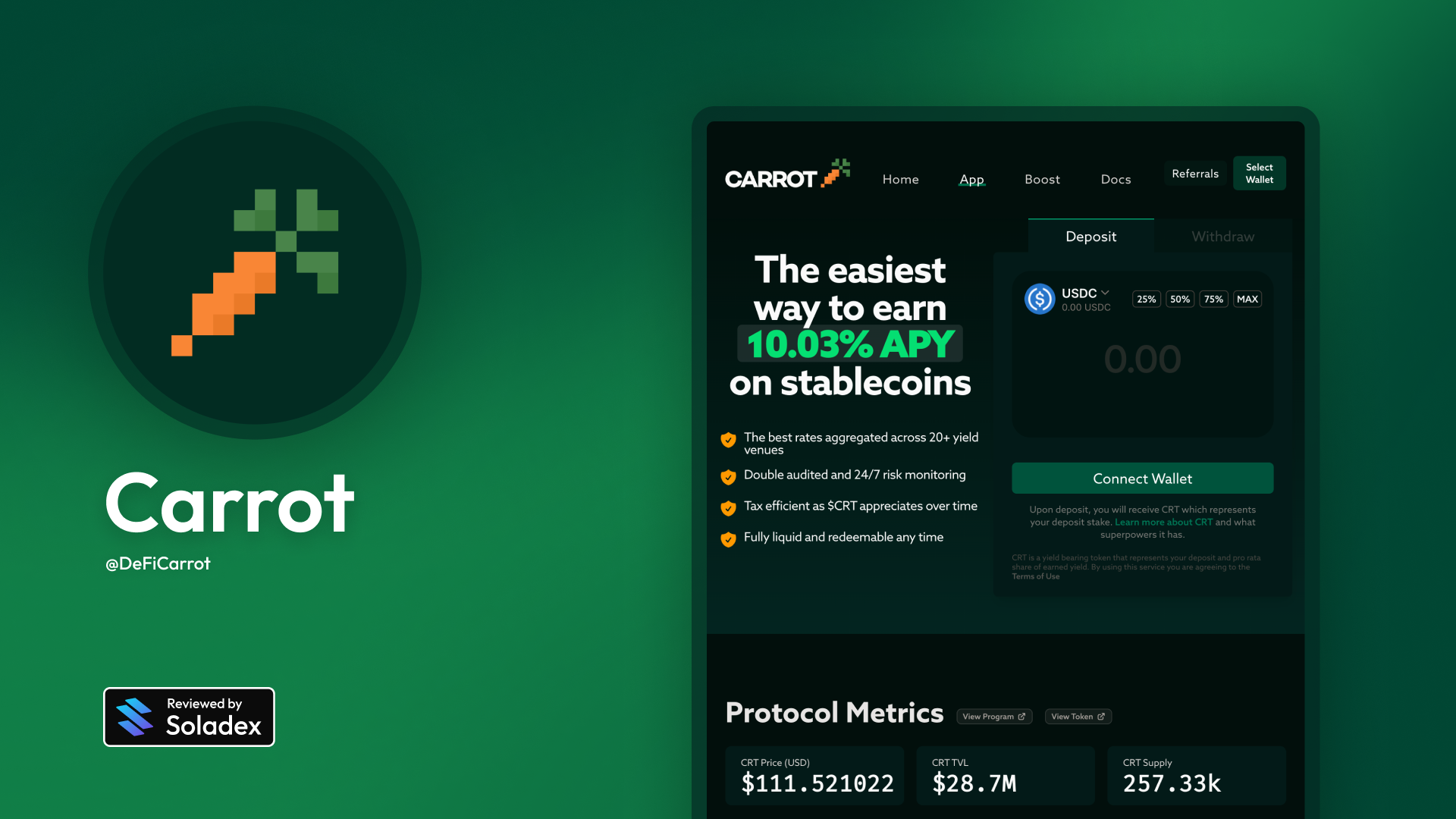What is Carrot?
Carrot is a yield aggregator built on Solana that lets you deposit stablecoins (USDC, USDT, PYUSD) and receive a yield-bearing token called CRT. You hold CRT in your wallet, and its value goes up over time as the vault earns interest from various lending protocols. The idea behind Carrot is simple: you don’t need to manually pick protocols or manage positions. Carrot does that work automatically through its unified token.

How It Works
Automated Optimization
Your stablecoins are routed across trusted protocols on Solana to get the best return. The system rebalances whenever better rates are available.
Unified Token (CRT)
Instead of separate tokens or LP positions, you just hold CRT. It accrues yield in its token price, and when you redeem or swap CRT, you get your share of stablecoins back.
Multi-Stablecoin Support
Rather than just one stablecoin, Carrot supports USDC, USDT, and PYUSD to help hedge against any risk affecting a single token.
No Hidden Fees
Carrot doesn’t currently charge a management fee, apart from a small redemption fee of 0.05% to protect the vault from arbitrage.
Using the Carrot Protocol
Step 1: Deposit Stablecoin
The first step is depositing into Carrot in exchange for CRT tokens.
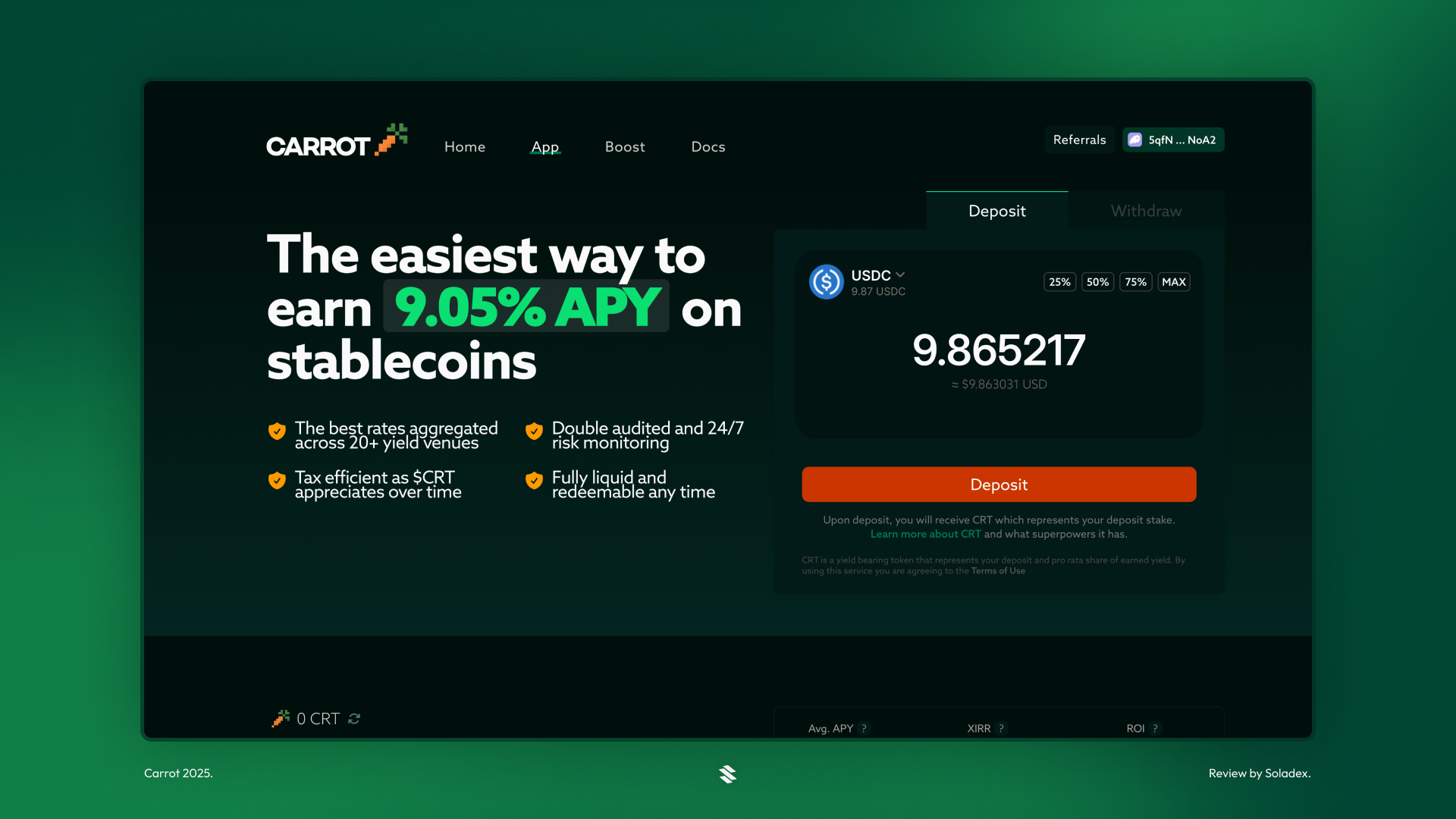
After clicking on Deposit, I got the CRT token that corresponds to the value of my stablecoin deposit.
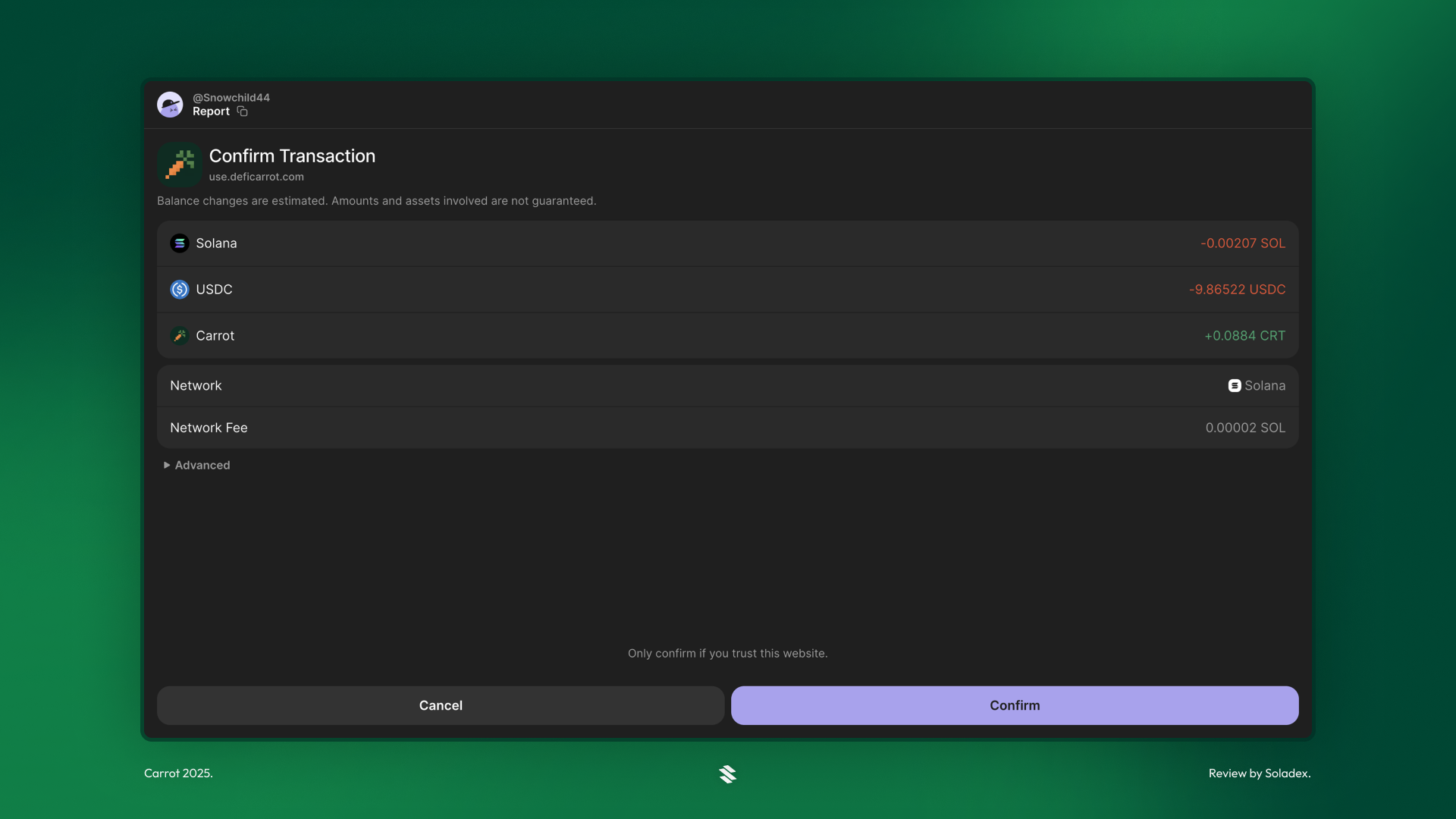
After swapping the USDC for CRT, the wallet address becomes trackable on the Carrot application. As shown below, the portfolio value, the deposits and all the earnings on the CRT token are displayed on the chart after a short time.

Currently, Carrot has a total value locked of USD$32.34m, with the price of CRT steadily increasing based on the value of the yield generated with the stablecoins deposited in the DeFi protocol.
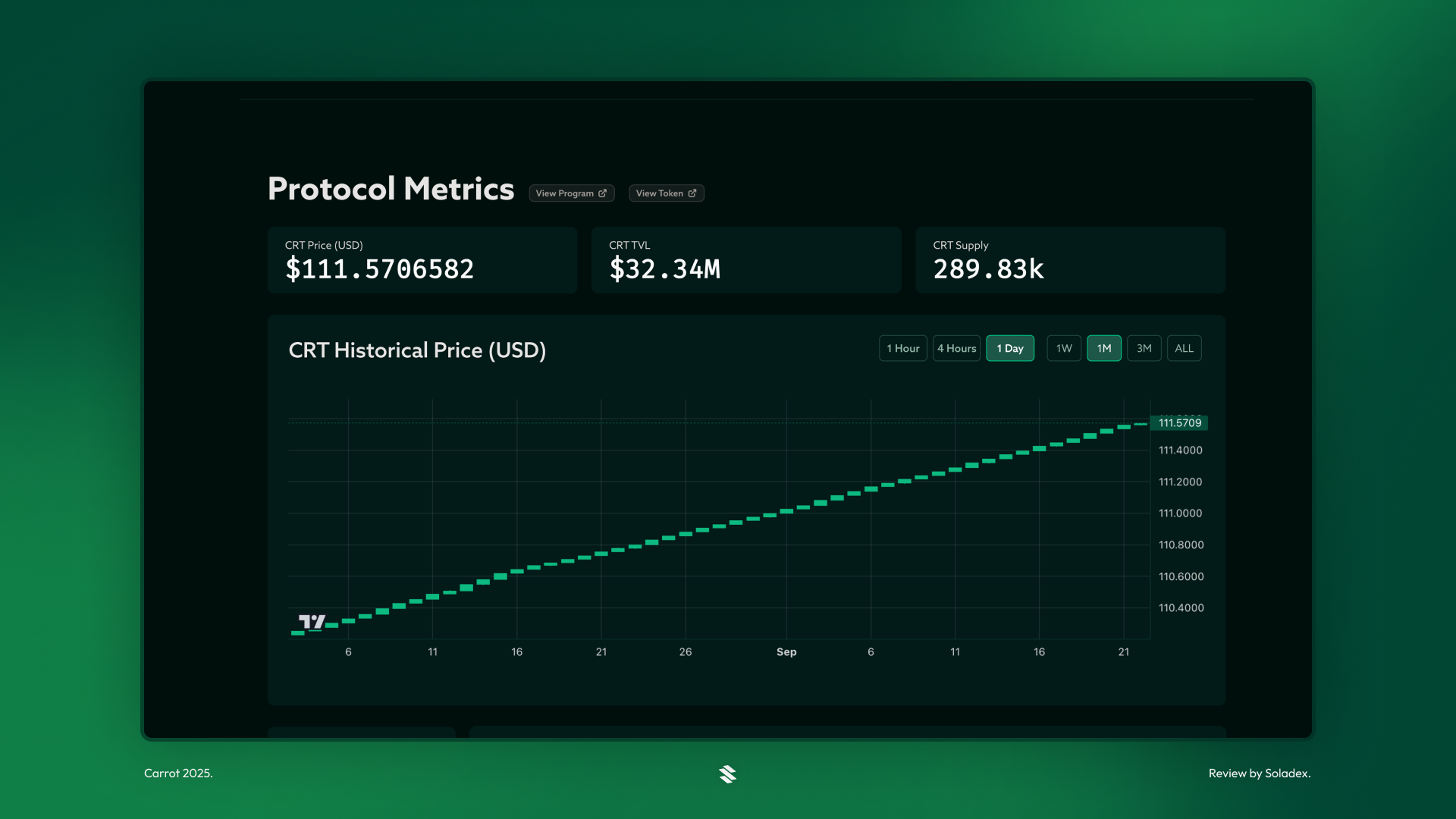
Below is a chart of the historical APY rates generated by Carrot through its CRT token. It shows a reliable monthly support that makes Carrot a dependable protocol for automated yield in the DeFi ecosystem on Solana.
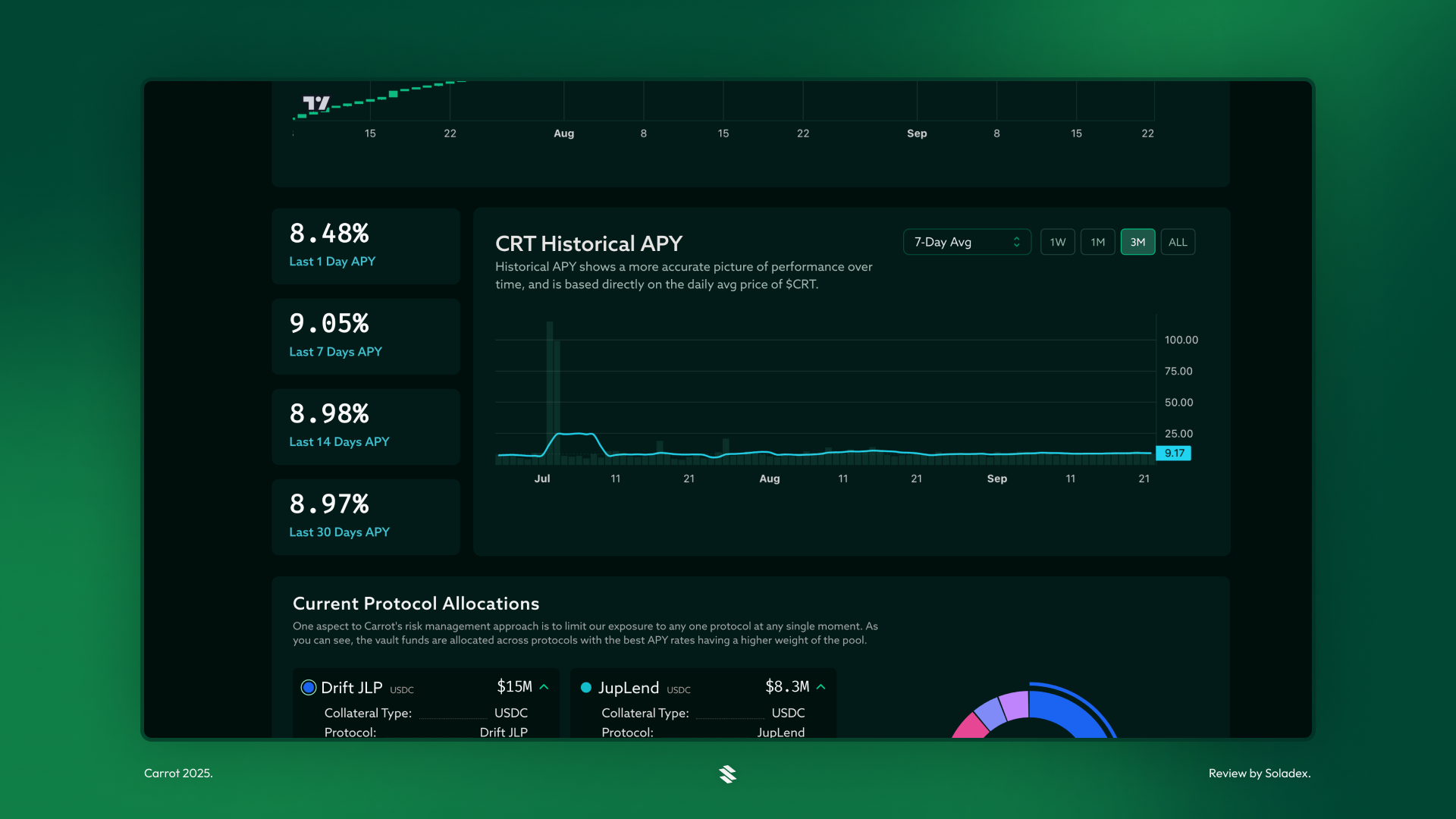
Step 2: Do Nothing
This is one of the main benefits of Carrot for its users. There is no need to check through a dapp to allocate or re-allocate your assets based on market swings, as Carrot already absorbed all these processes to work automatically for its users. Carrot lends out the deposits across the top protocols on Solana to capture their rates and convert the gains to the vault. This is the mechanism that increases the value of the CRT token.
Step 3: Redeem Stablecoin
To redeem on Carrot is as easy as depositing. You can swap your Carrot on any trustworthy DEX on Solana, such as Jup or Titan, or you can go back to the Carrot application and exchange your CRT tokens for your share in the protocol’s vault. This means that the value of stablecoins received is more than the amount deposited due to the growth of Carrot’s CRT token, where the earnings accrue.
Some of the Risks of Using Carrot
One of the risks involved in Carrot is that if one partner in the protocol has issues, such as a sharp liquidity drop or smart contract failure, it could impact Carrot’s ability to maintain yield for a while. Carrot protocol has been audited by Sec3 and MadShield for additional security measures against smart contract errors or hackers.
Also, some of the lending and borrowing platforms used by Carrot can be exploited or attacked by malicious actors.
Lastly, Carrot allocates the deposited funds into multiple top protocols on Solana with high and stable APY rates. This prevents any single negative event from affecting the entire pool on which Carrot is built.
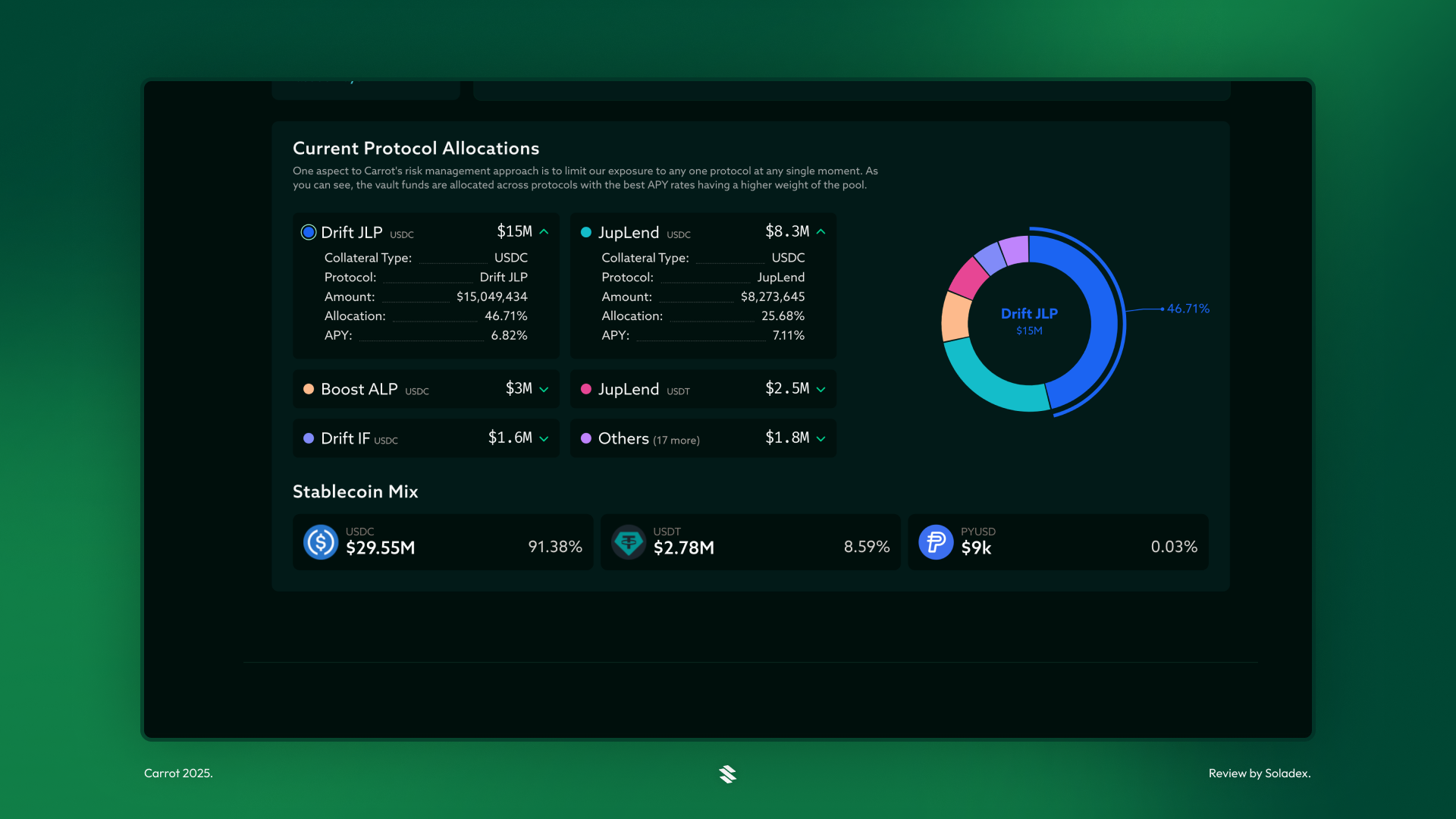
Who Can Use Carrot?
Passive Yield Seekers
If you want your stablecoins to work rather than just sit idle, Carrot offers a set-and-forget option that helps you to achieve this.
Normal Wallet Holders
Because CRT shows value increase in your wallet, and it’s easy to redeem, it works well for you if you don’t want to keep up with monitoring many DeFi platforms.
DAO Treasuries and Capital Managers
Organizations or individuals who have funds sitting idle (e.g. in stablecoins) can use Carrot to generate extra yield.
Conclusion
Carrot reduces the gap between passive stablecoin yield and ease of use in the Solana ecosystem. The DeFi protocol wraps the complexity involved in optimizing strategies for yield and diversification of assets into a single token for users to earn yield without watching many dashboards or hopping between protocols. It’s not risk-free, but for stablecoin holders and DAO treasuries, it’s a strong pick when you want returns but also want simplicity onchain.




